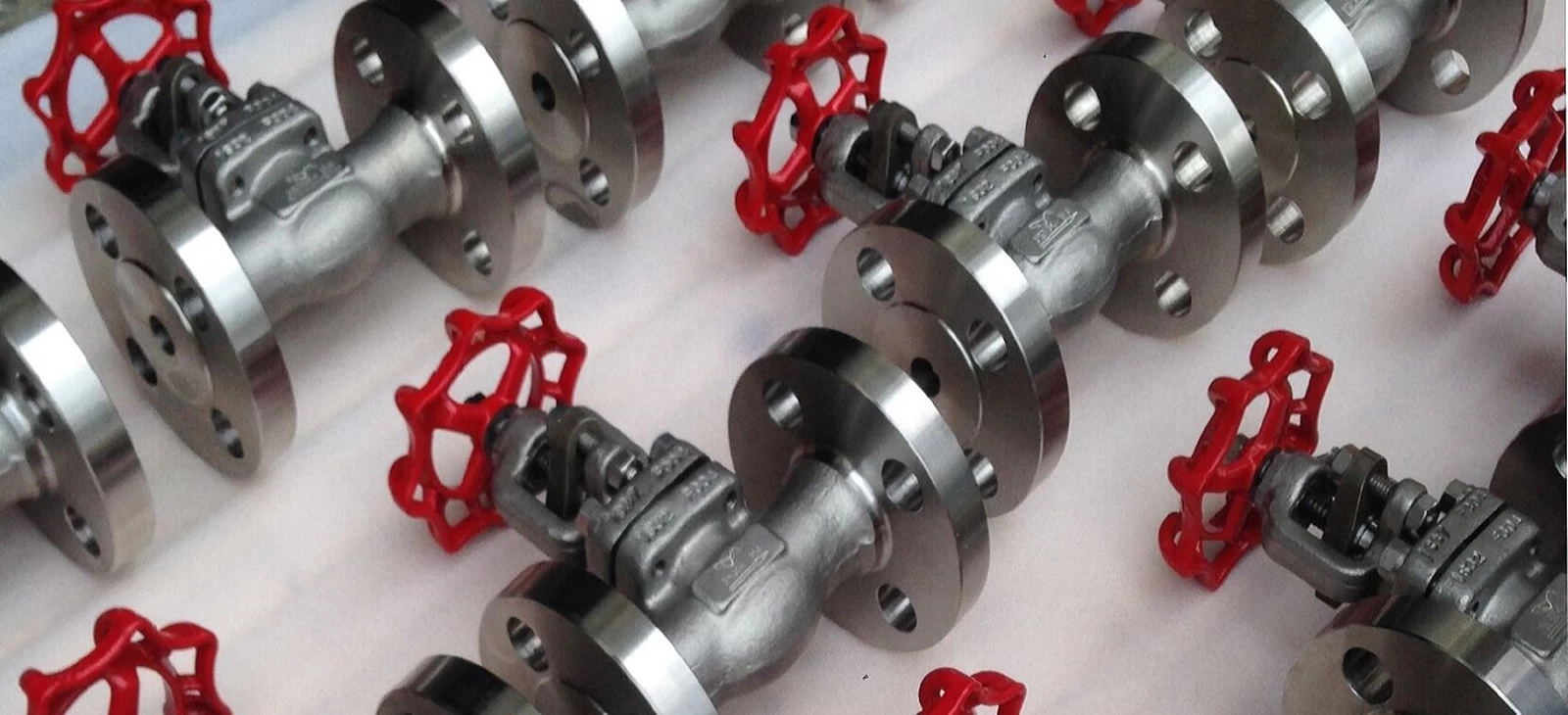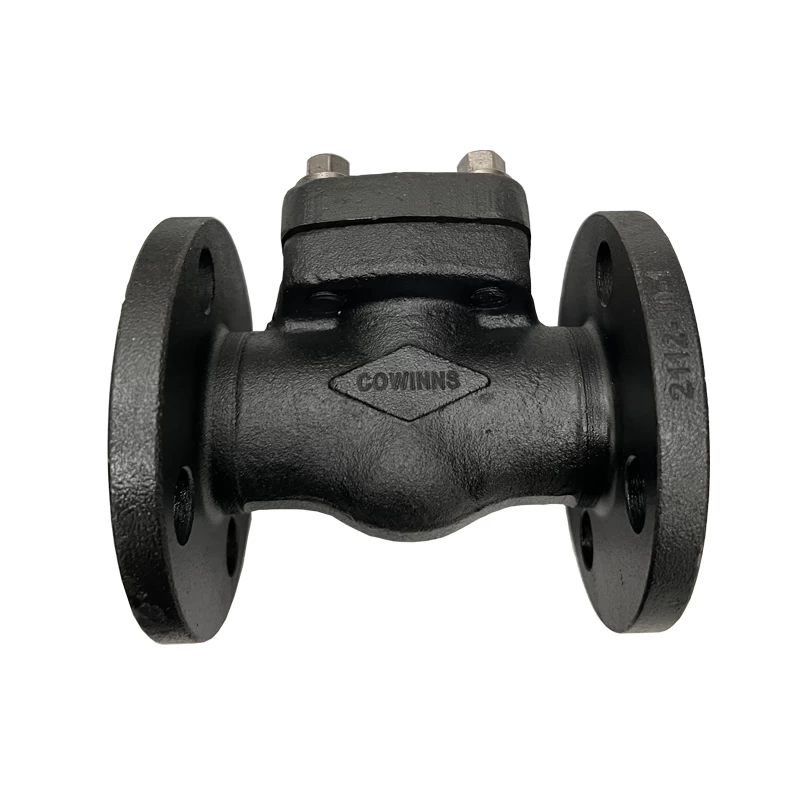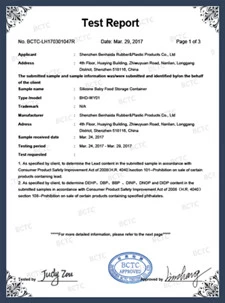How to choose valve materials for high temperature conditions?
The high-temperature working conditions mainly include sub-high temperature, high-temperature class I, high-temperature class II, high-temperature class III, high-temperature class IV, and high-temperature class V, which will be introduced separately below.
1. Sub-high temperature
Sub-high temperature means the working temperature of the valve is in the range of 325 ~ 425 ℃. If the medium is water and steam, WCB, WCC, A105, WC6 and WC9 are mainly used. If the medium is sulfur-containing oil, C5, CF8, CF3, CF8M, CF3M, etc., which are resistant to sulfide corrosion, are mainly used. They are mostly used in atmospheric and vacuum devices and delayed coking devices in oil refineries. At this time, valves made of CF8, CF8M, CF3 and CF3M are not used for acid solution corrosion, but for sulfur-containing oil products and oil and gas pipelines. In this working condition, the maximum working temperature of CF8, CF8M, CF3 and CF3M is 450 ℃. For power plant steam pipeline gate valve Cowinns design with press seal gate valve, application temperature is 450℃

2. High temperature class I
When the working temperature of the valve is 425 ~ 550 ℃, it is high temperature class I (referred to as PI class). The main material of the PI-level valve is CF8 in the ASTMA351 standard, which is "high-temperature grade I medium-carbon chromium-nickel rare earth titanium high-quality heat-resistant steel". Because PI grade is a specific name, the concept of high temperature stainless steel (P) is included here. Therefore, if the working medium is water or steam, although high-temperature steel WC6 (t ≤ 540 ℃) or WC9 (t ≤ 570 ℃) can also be used, although high-temperature steel C5 (ZG1Cr5Mo) can also be used for sulfur-containing oil They cannot be called PI grades here.
3. High temperature class Ⅱ
The working temperature of the valve is 550 ~ 650 ℃, which is set as high temperature class II (referred to as P class II for short). PⅡ high temperature valve is mainly used in heavy oil catalytic cracking device of oil refinery. It contains high temperature lining wear-resistant gate valve used in three-rotating nozzle and other parts. The main material of the P Ⅱ valve is CF8 in the ASTMA351 standard based on "high temperature Ⅱ grade medium carbon chromium nickel rare earth titanium tantalum strengthened heat resistant steel".

4. High temperature Ⅲ
The working temperature of the valve is 650 ~ 730 ℃, set at high temperature Ⅲ (referred to as P Ⅲ). PⅢ high temperature valves are mainly used in large heavy oil catalytic cracking units in refineries. The main body material of PⅢ grade high temperature valve is CF8M based on ASTMA351 standard "High temperature grade III medium carbon chromium nickel molybdenum rare earth titanium tantalum reinforced heat resistant steel".
5. High temperature Ⅳ
The working temperature of the valve is 730 ~ 816 ℃, set at high temperature Ⅳ level (referred to as P Ⅳ level for short). The upper limit of the operating temperature of the PIV valve is 816 ° C because the maximum temperature provided in the standard ASMEB16134 pressure-temperature rating of the valve design is 816 ° C (1500υ). In addition, after the working temperature exceeds 816 ° C, the steel is close to entering the forging temperature zone. At this time, the metal is in the plastic deformation zone, the metal has good plasticity, and it is difficult to withstand high working pressure and impact force without remaining deformed. The main material of the PⅣ valve is CF8M in the ASTMA351 standard, which is a basic type "high temperature IV grade medium carbon chromium nickel molybdenum rare earth titanium tantalum reinforced heat resistant steel". Heat-resistant stainless steels such as F310 (C content ≥01050%) and F310H in CK-20 and ASTMA182 standards.
6. High temperature Ⅴ level
The working temperature of the valve is more than 816 ℃, referred to as PⅤ class, PⅤ class high temperature valve (used as a shut-off valve, not a regulating butterfly valve) must use special design methods, such as lining insulation or water or gas Cooling, etc., can ensure the normal operation of the valve. Therefore, the upper limit of the working temperature of the PⅤ high-temperature valve is not specified, because the working temperature of the control valve is not solved only by materials, but by special design means, and the basic principles of the design means are the same. PⅤ high temperature valve can choose reasonable materials that can meet the valve according to its working medium and working pressure and the special design method adopted. In the PⅤ high temperature valve, usually the flue insert valve or butterfly valve insert or butterfly plate often use HK-30, HK-40 high temperature alloy in ASTMA297 standard, they can resist oxidation and reducing gas below 1150 ℃ Corrosion resistance, but cannot withstand impact and high pressure loads.
 +86 512 68781993
+86 512 68781993 


















